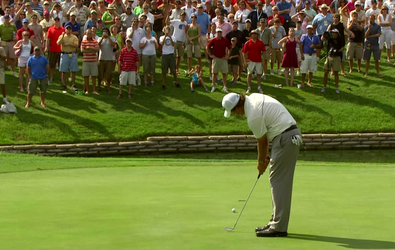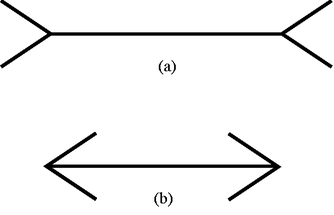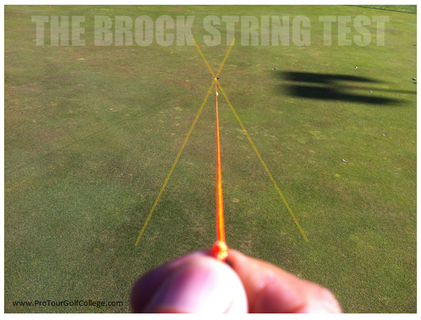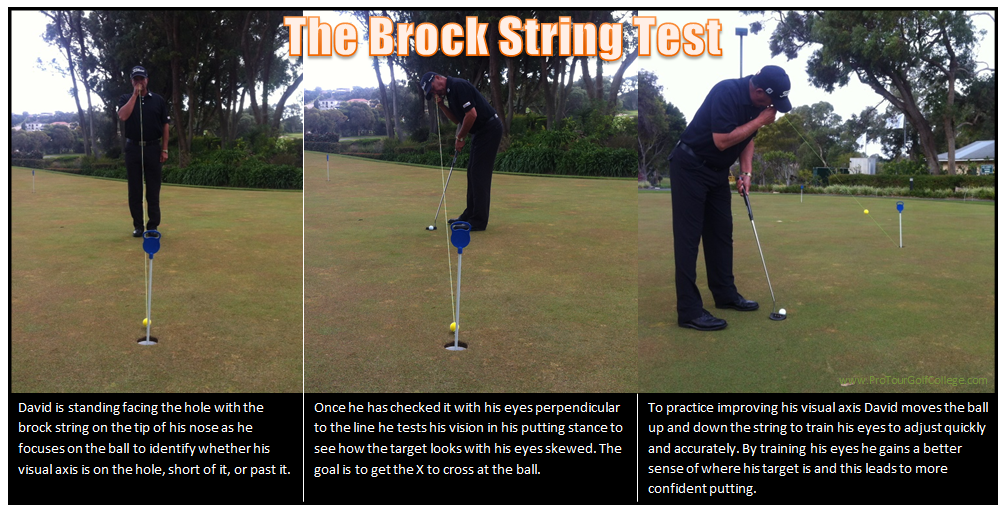How You Can Make A Lot More Putts Inside 10 Feet With This Little Known But Simple Putting Test28/6/2014
"We have also found that golfers who have excellent target localisation ability have better green reading and speed control ability."  Great putters 'see' putts better and this is the difference Great putters 'see' putts better and this is the difference Have you ever met a golfer who appears to have a great putting stroke but they miss lots of make-able putts? There are lots of pros and amateurs who have sound mechanical putting strokes but miss a lot more putts than they should. Today more than any other time in history you have the opportunity to improve any aspect of your game with expert golf instructors who know more about how to teach the different skills of golf than ever before. There’s a problem however. Even with better coaching knowledge and technology many golfers from average to elite still struggle on the greens to make more of the make-able putts that matter. What I’m talking about are the putts inside 10 feet that can be the difference between great rounds and ordinary ones. When you go to a pro tournament you will see many tour golfers working on their specific putting drills and the most popular are those that improve stroke mechanics. But even with a mechanically sound stroke and an effective green reading system putts are still going to miss. And they will not only miss because of a poor stroke or poor green reading skills but for another reason rarely discussed enough. So why do some golfers make more of the make-able putts than others when we take green reading and stroke out of the equation? We think that the starting point of great putting is to understand that your perception or visual acuity influences good and bad putting more than anything else you can do. The one thing all great putters have in common is that they see putts better than those who struggle with their putting. What do I mean by ‘see’ putts better? The Müller-Lyer Illusion Are lines (a) and (b) the same length? Are lines (a) and (b) the same length? I’m sure you have heard the saying “your perception is your reality or something similar?” What this means is what you see is what you get, but it’s actually not always true because what you see can be a long way from what is really there. What if the hole is not exactly where you think it is?... When we work with our students on their putting skills we tell them that their eyes actually don’t see, the eyes simply transfer information from the environment through to the brain which interprets the information and makes sense of it. Your brain makes sense of the information based primarily on your stored memories in different parts of your brain. The information of what you see in the environment is compared with similar memories and then sent through to specific groups of muscles that are activated to drive your putting stroke with information about where to aim and hit the putt, and also how hard to hit it. The trouble is that the target you see in the environment may not be exactly where you think it is. Let me give you an example of what I mean. Target Localization Test When we work with our students at Pro Tour Golf College we perform a variety of assessments to determine the areas of their game that they need help with, and one of the simple tests short putt we perform is a target localization test using a Brock string. The Brock string is a 10 foot long string with 3 beads on it. One end is held on the tip of your nose as you stand facing a hole (or in your putting stance) with the other end of the string extended and fixed to the front of the hole (or attached to the pin) with a tee or something similar. The primary goal of the Brock string is to provide you with visual feedback of your visual axis when you are viewing the hole from zero to 10 feet. Our students are asked to look down the string at 1 to 3 beads (or small balls) we position along the string approximately 4, 7 and 10 feet away from their nose and we ask them to focus on any one bead and share with us what they see.  Do you cross the X at the hole, short of it or past it? Do you cross the X at the hole, short of it or past it? What they normally see is that the single line becomes two lines and that the 2 lines cross the string like an X either before the bead they are focusing on, on the bead or beyond it. The goal of this test is to get the student to align the X on the chosen bead to improve what is described as spacial or target localization. Ideally when you perform this simple test your visual axis (the X) should match the position of the bead. What we have found with our testing however is that many golfers from average to elite see the X when looking at the 10 foot mark is very often short of the hole, and many golfers actually see it between the 7 to 10 foot bead. Some even see it past the hole, although this is a lot less common. What this suggests to us is that the golfers perception of where the hole is located (what they see) is that it is short of its actual location and the consequences of this can be numerous with the most obvious being green reading and speed control problems. Think about it for a second. If you see the hole short of where it actually is do you think that this would affect your putting ability? Do you think that your brain would have to work harder and compensate more for this mis-perception? We have also found that golfers who have excellent target localisation ability have better green reading and speed control ability. That is, they tend to make more putts because they have a better sense of where their target is located in space and consequently they are more confident of reading the break better and their speed control is sharper. Practicing with the Brock string and sharpening your visual abilities is easy because all you need is some string and a few beads or small balls and some time to practice. When you practice with the Brock string move or bounce your focus from one bead to another up and down the string learning to merge your X with the chosen bead quickly and easily. With regular practice you will train your eyes to work together (known as convergence) and you will find that your ability to know where the target is will be enhanced. Precise target localization is critical in putting and short game skills and the better your awareness of where the target really is the better you will aim, read greens and execute your stroke.
Comments are closed.
|
Archives
June 2019
|
Proudly Supported By
Copyright © 2011 - 2018 Pro Tour Golf College
Website Managed By Golf Performance Media
All Rights Reserved
Website Managed By Golf Performance Media
All Rights Reserved




 RSS Feed
RSS Feed



